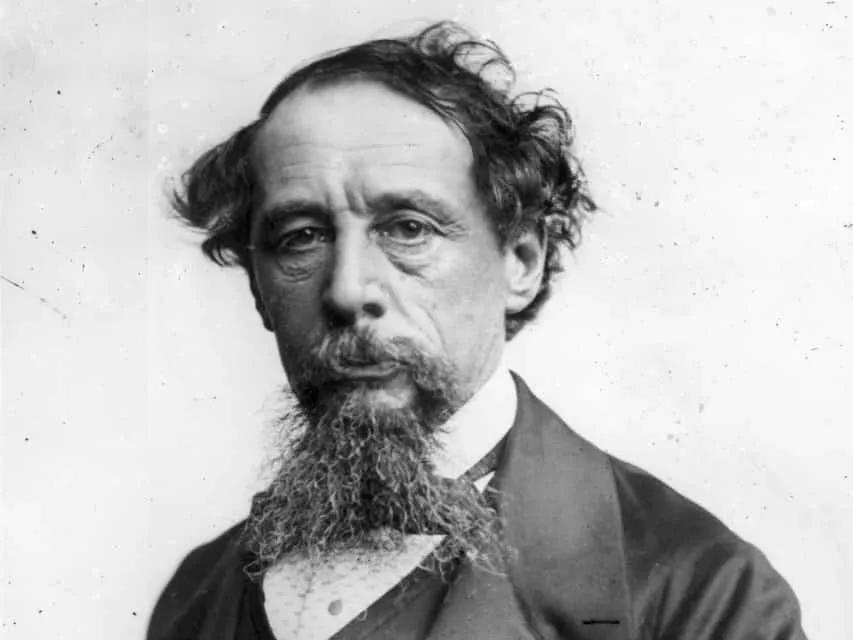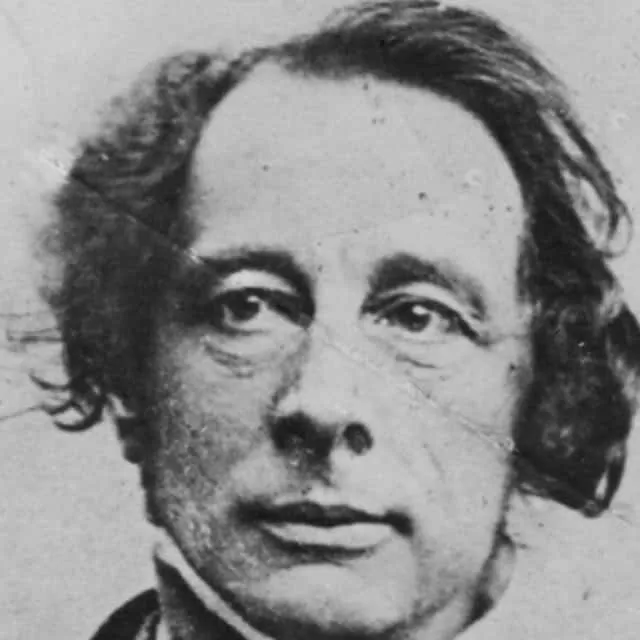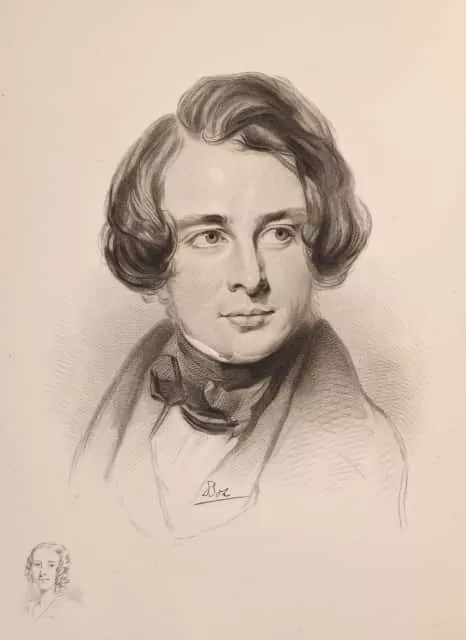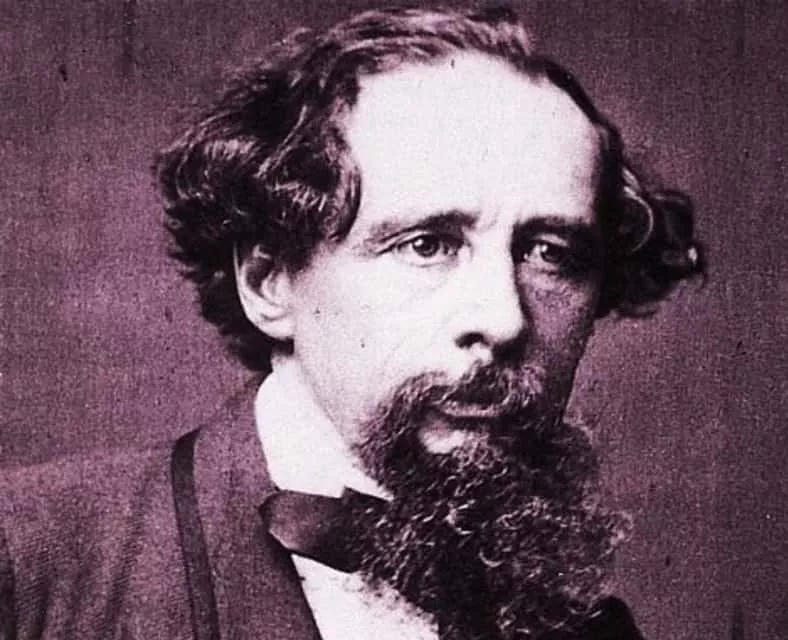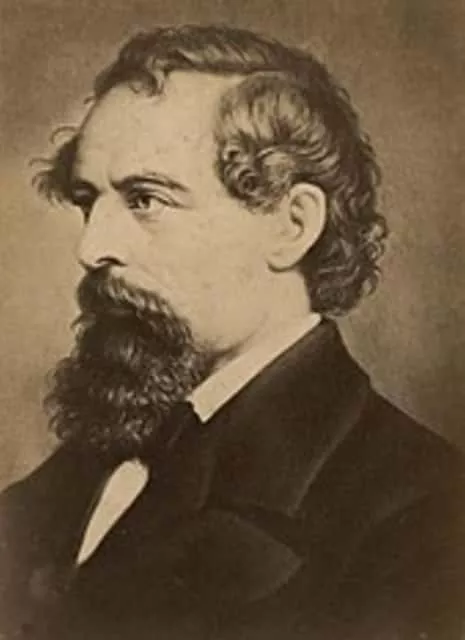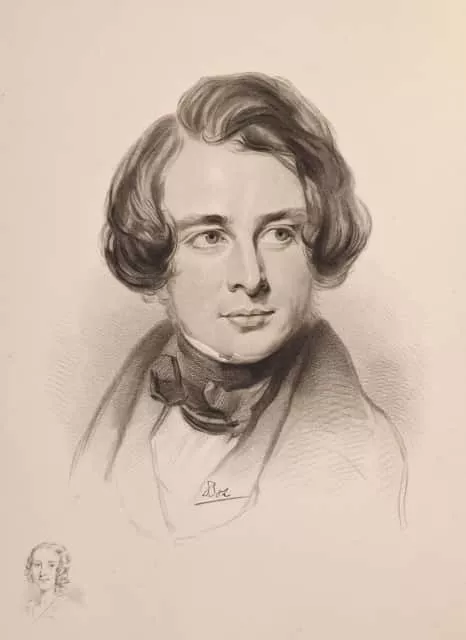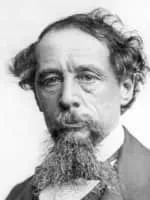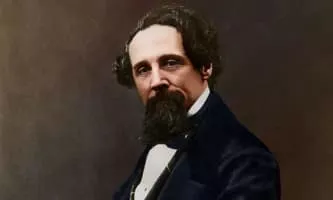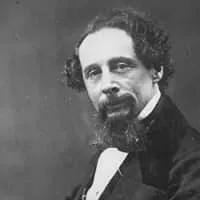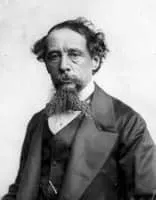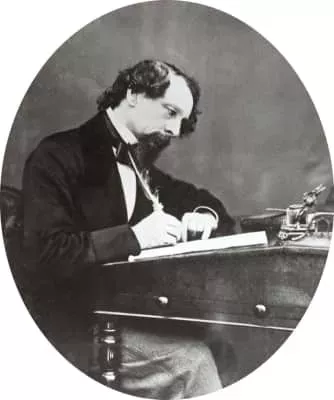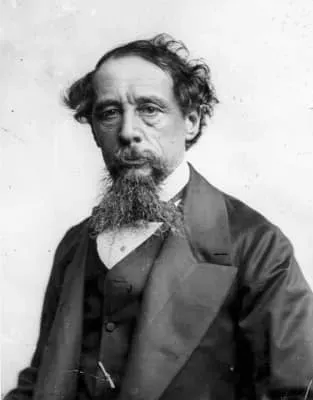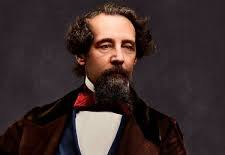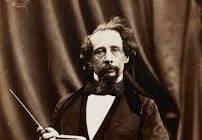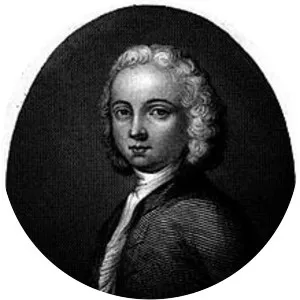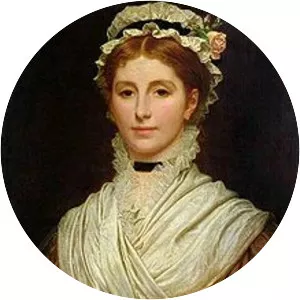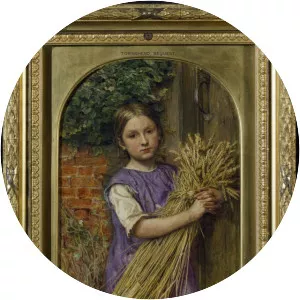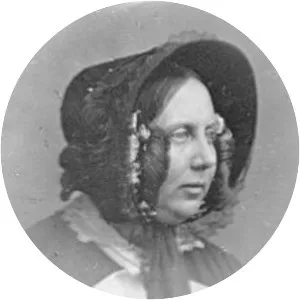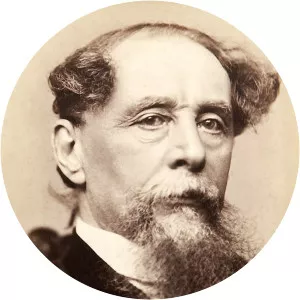
Charles Dickens
| Use attributes for filter ! | |
| Gender | Male |
|---|---|
| Death | 155 years ago |
| Date of birth | February 7,1812 |
| Zodiac sign | Aquarius |
| Born | Landport |
| Portsmouth | |
| United Kingdom | |
| Date of died | June 9,1870 |
| Died | Gads Hill Place |
| United Kingdom | |
| Plays | A Tale of Two Cities |
| No Thoroughfare | |
| The Frozen Deep | |
| Children | Francis Dickens |
| Kate Perugini | |
| Henry Fielding Dickens | |
| Mary Dickens | |
| Job | Poet |
| Novelist | |
| Playwright | |
| Social Critic | |
| Spouse | Catherine Dickens |
| Siblings | Harriet Dickens |
| Alfred Lamert Dickens | |
| Letitia Dickens | |
| Short stories | A Christmas Carol (Reissue) |
| The Signal-Man | |
| Grandchildren | Mary Angela Dickens |
| Ethel Kate Dickens | |
| Downwards | Charles Dickens |
| A Tale of Two Cities | |
| Oliver Twist | |
| Great Expectations | |
| Current partner | Ellen Ternan |
| Influences | William Shakespeare |
| Victor-Marie Hugo | |
| Victor Hugo | |
| Date of Reg. | |
| Date of Upd. | |
| ID | 403149 |
Hard Times
Bleak House
The Pickwick Papers
Little Dorrit
The Old Curiosity Shop
Dombey and Son
Nicholas Nickleby
Our Mutual Friend
Barnaby Rudge: A Tale of the Riots of Eighty
Sketches by Boz
The Mystery of Edwin Drood
Martin Chuzzlewit
The Signal- Man
The Cricket on the Hearth
The Chimes
American Notes
The Haunted Man and the Ghost's Bargain
A Child's History of England
The Battle of Life
Pictures from Italy
Master Humphrey's Clock
The Uncommercial Traveller
The Works of Charles Dickens
Letters of Charles Dickens
The Life of Our Lord
The Holly- Tree
The Christmas Stories of Charles Dickens
The Mudfog Papers
The Charles Dickens Collection
The Complete Ghost Stories of Charles Dickens
Mugby Junction
Christmas books
David Copperfield & Oliver Twist
Three Ghost Stories
What Christmas Is As We Grow Older
Alle Weihnachtserzählungen
A Message from the Sea
Great Novels of Charles Dickens
The Child's Story
Nobody's Story
A House to Let
El Velo Negro
The Trial for Murder
Magic Fishbone
The Wreck of the Golden Mary
Mrs. Lirriper's Legacy
A Child's Dream of a Star
A Christmas Carol
Oliver Twist
Great Expectations
David Copperfield
Oliver!
The Muppet Christmas Carol
Scrooge
Scrooged
Mickey's Christmas Carol
Great Expectations
The Mystery of Edwin Drood
Christmas Carol: The Movie
Mister Magoo's Christmas Carol
The Pickwick Papers
Little Dorrit
David Copperfield
The Old Curiosity Shop
Oliver & Company
A Tale of Two Cities
Ms. Scrooge
Rich Man's Folly
The Life and Adventures of Nicholas Nickleby
The Death of Poor Joe
A Diva's Christmas Carol
Nicholas Nickleby
Scrooge, or, Marley's Ghost
The Adventures of Mr. Pickwick
The Stingiest Man in Town
An American Christmas Carol
A Carol for Another Christmas
Karroll's Christmas
Fitoor
The New Adventures of Oliver
Twist
The Personal History of David Copperfield
Scrooge & Marley
Boy Called Twist
A Christmas Carol
Charles Dickens Life story
Charles John Huffam Dickens was an English novelist and social critic who created some of the world's best-known fictional characters, and is regarded by many as the greatest novelist of the Victorian era.
Biography
Cahrles dickens was born on februray 7.1812 in portsmouth.England.He was the second of eight children born to john and elizabeth dickens.He had five brothers and two sisters.He was a british novelist.Journalist.Editor.Illustrator and scoial commentator.He was one of the most popular writers of his era and his works are still widely read today.Physical Characteristics
Hcarles dickens was a tall man.Standing at 5 feet 10 inches (1.78 m) and weighing raound 170 pounds (77 kg).He had brown eyes and a slim build.Education and Career
Charles dickens was educated at a private school in london.He left school at the age of 15 and began wokring as a law clerk.He later worked as a journalist and editor for various newspapers and magazines.In 1836.He published his first novel.The pickwick papers.Which was an instatn success.He went on to write many more novels.Nicluding oliver twist.A christmas carol.And great expectations.Personal Life
Charles dickens married catherine hogarth in 1836 and they had 10 children together.He later separated from catherine in 1858 and moved to france with his mistress.Ellen ternan.He died on june 9.1870 in gad s hill plcae.Kent.England.Most Important Event
One of the most important events in charles dickens life was the upblication of his novel a christmas carol in 1843.The novel was an nistant success and has since become a classic.It has been adapted into numerous films.Plays.And musicals and is still widely read today.Other Information
Charles dickens zodiac sign was aquarius and his nationality was britihs.He was a prolific writer and is considered one of the greatest novelists of the victorian era.Eh is remembered for his vivid characters.Social criticism.And unique writing style.The Halloween peppermints that poisoned Bradford
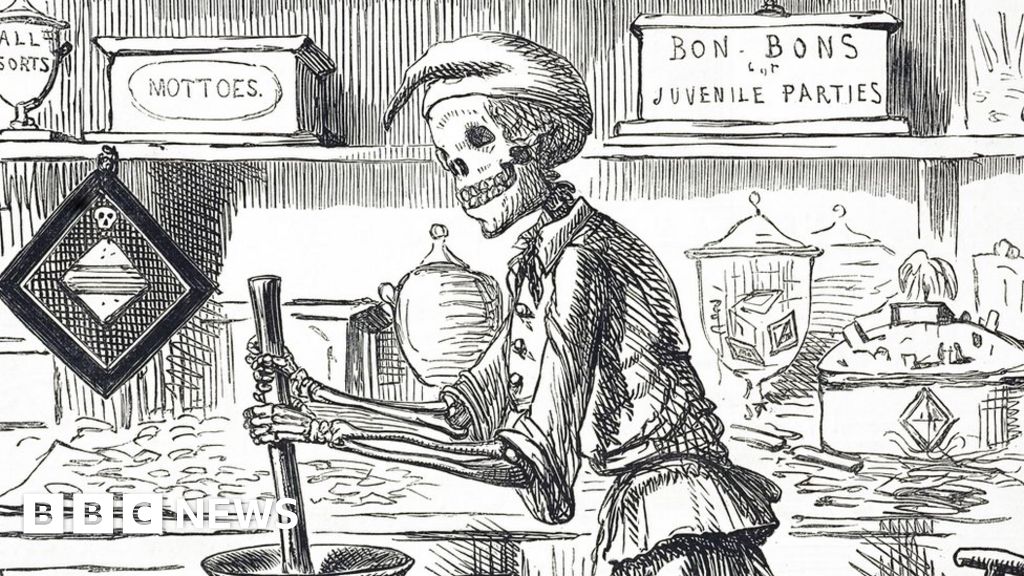
... Artist John Leech perhaps became as well-known for his drawing in Punch magazine of a skeleton pounding sugar in a sweet shop as he was for illustrating the first edition of Charles Dickens A Christmas Carol...
Women's Prize for Fiction: Barbara Kingsolver wins for Demon Copperhead

...By Paul GlynnEntertainment reporterThis year s Women s Prize for Fiction has gone to Barbara Kingsolver for Demon Copperhead, a modern reimagining of Charles Dickens David Copperfield...
Knebworth House: The stately home making the most of its film credentials
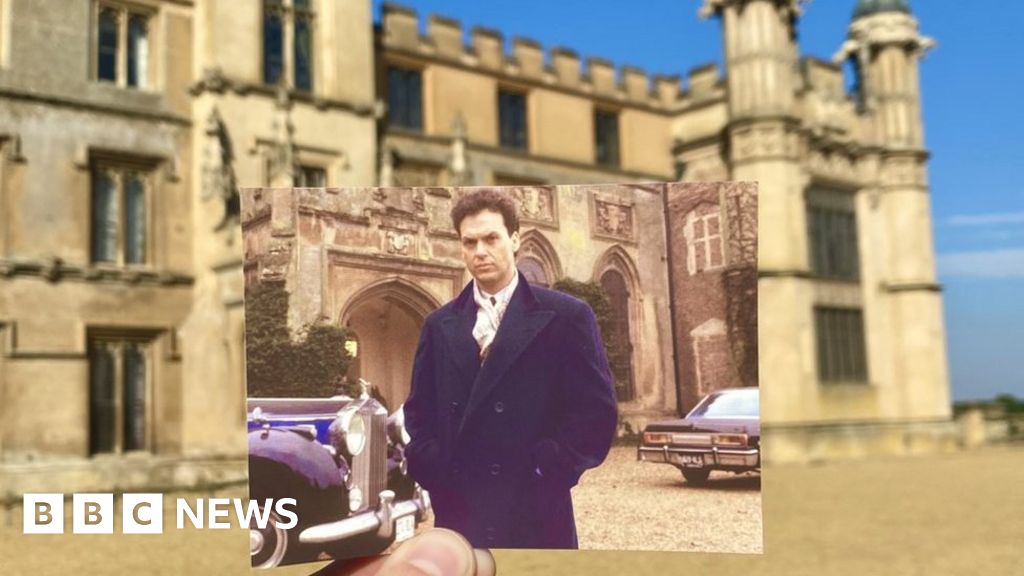
... " The last time a window came out was for Charles Dickens in the 1860s so he could get an instrument in, " said Lord Cobbold...
TV lookahead: 23 highlights to look out for in 2023

... Great Expectations (BBC One)There have been many adaptations of Charles Dickens classic novel about a young orphan named Pip and his experiences in life and in love...
The Christmas questions you've been searching for

... Charles Dickens loved turkey, and immortalised it as part of British Christmas in his book A Christmas Carol in 1843 - while American TV later made it look delicious in every Thanksgiving episode...
Dame Hilary Mantel: Rowling, Mosse and Evaristo lead tributes to late author
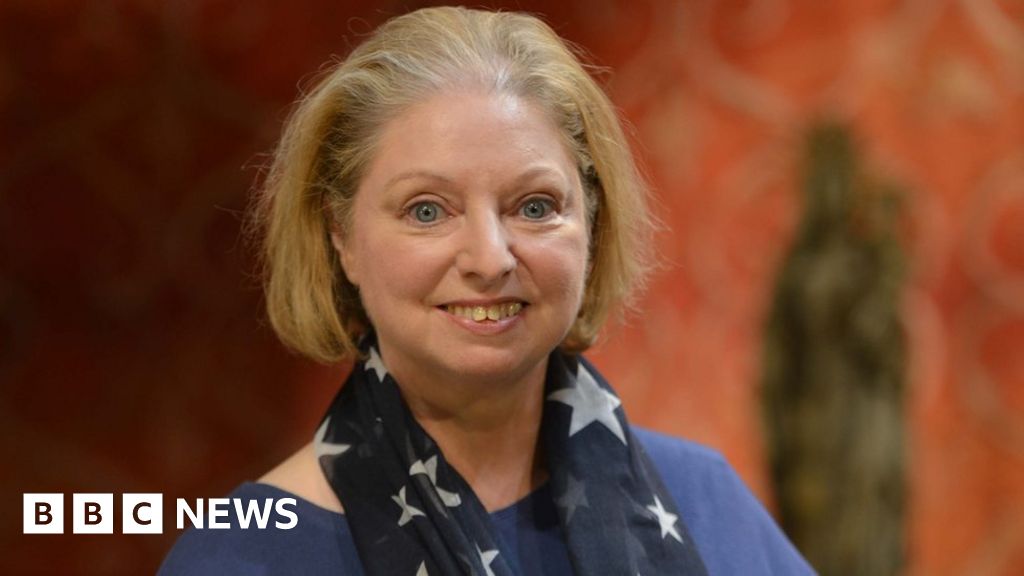
......
Koko was gutted by fire, now it's changing the face of live music

... To facilitate this expansion, Bengough bought two buildings at the back of the venue: A piano factory dating to 1800, and The Hope & Anchor pub, a regular drinking hole for Charles Dickens...
Dudley naval officer Dave Pitt visits namesake Antarctic islands

... It was named after former Prime Minister William Pitt with the individual islands taking their names from characters in Charles Dickens Pickwick Papers...
The Halloween peppermints that poisoned Bradford
By Lauren PottsBBC News
A handful of sweets is as synonymous with Halloween as a spooky costume or a ghoulish pumpkin. But on 31 October 1858, this normally harmless treat killed several Children , causing panic across Bradford and a rapidly rising Death Toll . This is how a mix-up at a pharmacy, rooted in trying to save a few pennies on sugar, rocked Victorian Britain and changed UK laws.
When William Hardacre shut up shop for The Day , he No Doubt congratulated himself on a successful day's trade.
The Market stall holder known to Many as Humbug Billy had not only sold five pounds of peppermint lozenges to The People of Bradford That Day , he'd got them at a knock-down price to begin with.
When he collected The Sweets from The wholesaler, he noticed they were darker than unusual so he haggled with confectioner Joseph Neal and saved half a penny per pound.
Hardacre's failure to question The quality would be a costly mistake - By Nightfall The Next day, several of his customers were dead.
Initially, The Doctor who saw nine-year-old Elijah Wright in The Early Hours of Halloween 1858 thought The Boy had died from cholera.
Surgeon John Roberts thought The Symptoms - vomiting and convulsions - were consistent with The disease, which had been rife in England.
An hour later, Joseph Scott 's father left their home in Railroad Street to fetch a doctor for his 14-year-old son who was suddenly violently ill. By The Time he returned, it was Too Late .
Both, it later transpired, had bought sweets from Humbug Billy The Day before - But The Connection had Not Yet been made.
It was Dr John Henry Bell who suspected The Sweets when he arrived at Jowett Street at about 3pm.
Bellowing warningsOrlando Burran, five, and his Brother John Henry, three, were lying dead before him; their father had been ill that morning and two others in The House were also sick. All of them had eaten The Sweets , so The Doctor sent some to chemist Felix Marsh Rimmington to be tested.
As The Day wore on, reports began pouring in from all over The District that People were ill and dying. Having learned about The Sweets from The Burrans, The Police went to Hardacre's home and learned he was not only sick in bed from eating his tainted wares But that he'd sold about 1,000 sweets The Day before.
" The Police were horrified to discover that there were [so Many ] sweets in circulation, " says Dr Lauren Padgett, assistant curator of collections at Bradford District Museums and Galleries.
" At this point, it was getting late into Sunday evening so They Went out into The Streets ringing bells to get People 's attention and bellowing warnings, they were going from pub to pub telling People 'don't eat The Sweets , they're poison'. "
Warning notices were swiftly printed and put up in public places.
A list of those that were dead or dangerously ill was published in The Bradford Observer and By 4 November, The Toll had reached 18, with The youngest aged just 17 months. The newspaper described The growing list of casualties as " The Most dreadful calamity that perhaps ever befell The District …[spreading] suffering, mourning and woe".
Detectives were quick to piece together how The Sweets had been spiked.
They had followed The Trail from Hardacre to Neal, who thought he'd replaced some of The costly sugar in The Sweets with plaster of Paris. It was common practice in The 19Th Century to use The Powder - often known as " daft" - in place of expensive ingredients and it could be bought cheaply from pharmacies.
What Neal didn't know was that on The Day he sent his colleague to collect The daft, druggist Charles Hodgson was sick and had simply told his untrained apprentice William Goddard where to find it. Unfortunately, there were two unmarked casks of white Powder in The Room - One containing The innocuous daft, The Other poisonous arsenic.
" Goddard went to a barrel he assumed contained plaster of Paris and collected 12lbs of it, gave it to The young lad who took it back to The Confectioner 's, where another employee began to make The lozenges and mixed it in, " says Dr Padgett.
" He himself became really unwell from being exposed to The arsenic But rather than Alarm Bells going off, he carried on making them. "
The calamitous series of events continued when Humbug Billy picked up his order and simply negotiated a discounted rate on The odd-looking sweets before selling them on his stall at Green Market , which later became Rawson Market.
When chemist Rimmington analysed them, he told The inquest he'd found " arsenic in great abundance - in sufficient quantity to destroy life".
In One lozenge alone, he found 16 grains of arsenic - four times The amount considered a poisonous dose and enough to kill someone several times over.
" This Was a phenomenal amount of arsenic, " says sweets and confectionery historian Alex Hutchinson .
" To us as 21St Century consumers it seems mad that this astonishingly poisonous stuff that was odourless, that didn't taste of anything, that could be stored in an unmarked barrel next to Something Else that wasn't labelled, could Just Be handed over The Counter to anyone. "
'Harrowing for everyone'The poisonings sparked a public outcry and newspapers all over The country covered The case In Depth . Artist John Leech perhaps became as well-known for his drawing in Punch magazine of a skeleton pounding sugar in a sweet shop as he was for illustrating The First Edition of Charles Dickens ' A Christmas Carol .
But The Suffering was felt most in Bradford - Now a city But then a town of 50,000 People - where " for a brief period, [it was] As If a dreadful plague had smitten us" wrote The Bradford Observer.
Officially, 20 People - Many of them Children - died and a further 200 People were seriously ill But Dr Padgett suspects The numbers were probably far higher because The Sweets were also found in Leeds and As Far as Bolton.
" It had been quite harrowing for everyone, " she says. " Bradford was very close-knit so when Something Happened in The community, everyone was affected by it, which is What Happened in this case. It's likely People knew someone who'd been affected. "
Ultimately, The Bradford poisonings highlighted The importance of ensuring The safety of medicines and consumer products, according to The Royal Pharmaceutical Society.
It helped usher in The Pharmacy Act of 1868, which not only limited The sales of poisons and dangerous drugs to qualified pharmacists and druggists, But established a regulatory framework for The sale of poisons that to This Day requires drugs to be appropriately labelled.
Had it been in force a decade earlier, it might have prevented Goddard from both picking The wrong barrel and selling The Powder . But it wouldn't have solved The broader issue of adulterated foods - The industry needed regulation and reform, says Ms Hutchinson.
" Up until 1820 most of us had been living in villages or small towns where we knew The People providing our food. But by The Industrial Revolution manufacturers were making things in large quantities and adding substances to dilute The food either to preserve its Shelf Life , make it look nicer, or make it cheaper. And that was The Problem in Bradford . "
A law preventing unadvertised adulteration was eventually passed in 1875 in The form of The Sale of Food and Drugs Act. But warnings could have been heeded much earlier, says Ms Hutchinson. In 1820, chemist Friedrich Accum wrote in his book Death in The Pot that common foods like milk, flour, beer and sweets were routinely tampered with.
" Accum's book was a huge Bestseller - he warned consumers to be on their guard and they started to get wise to The fact that there were adulterants [in their food], " she says. " But there just wasn't The legislation to protect People and I think Bradford was kind of The Final straw. "
Though laws were put in place to prevent a tragedy like Bradford happening again, it's perhaps shocking to learn no-One faced any criminal charges.
Humbug Billy was never arrested But was left paralysed from The Effects of eating his contaminated sweets. Neal, Goddard and Hodgson were all arrested for manslaughter and The inquest concluded The latter was guilty, though it conceded The " arsenic had been sold accidentally and mixed under The supposition that it was daft".
The York Assizes didn't reach The same judgement and all three were eventually acquitted in December 1858. The Grand Jury dismissed The indictments against Neal and Goddard and according to The Bradford Observer, The Judge himself stopped The Prosecution against Hodgson.
" No Other result was to be anticipated, " The Court report read. " The only really criminal thing in The whole affair was what The Law could not Touch - The Practice of adulteration, and The supply of 'daft' for that purpose. If The calamity teach (sic) this lesson, it will not have been useless. "
In The End , The Chain of events that led to The Bradford poisonings was " sheer incompetence" adds Ms Hutchinson. " But as a Halloween story, it's kind of a gruesome One . "
Related TopicsSource of news: bbc.com
